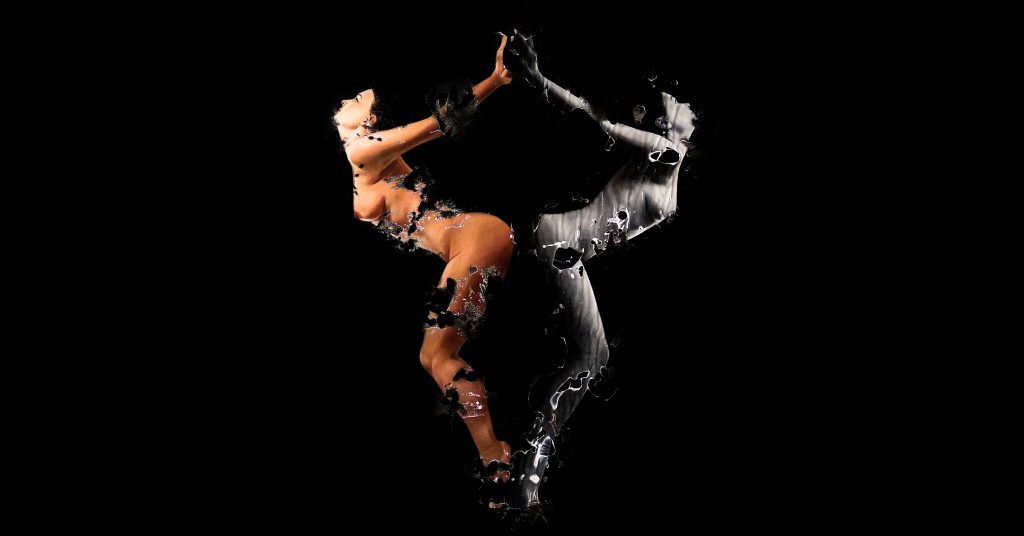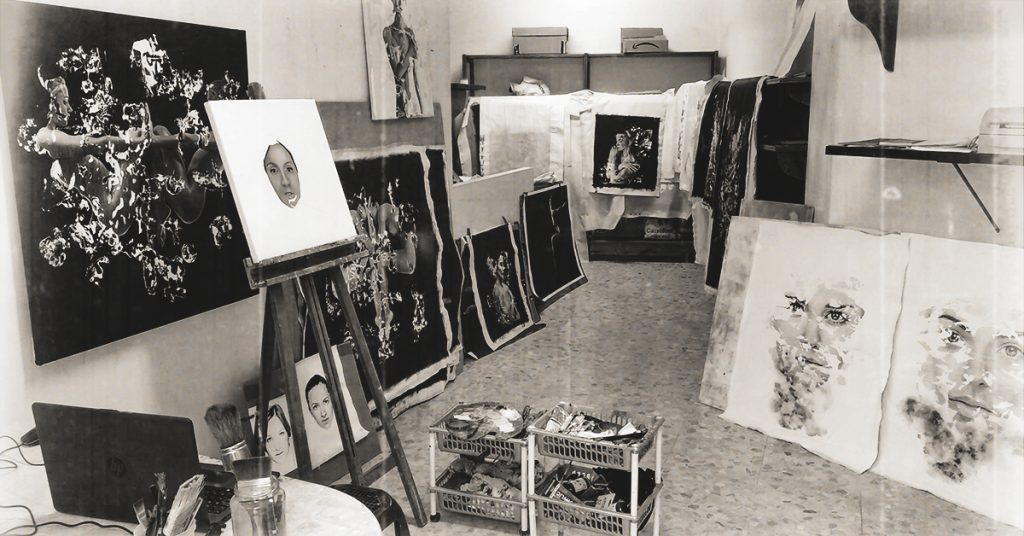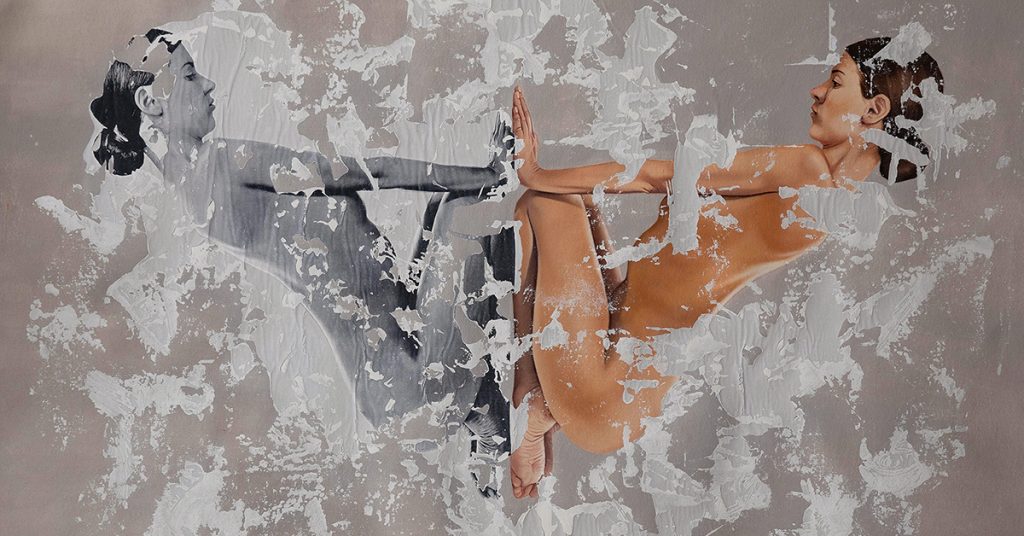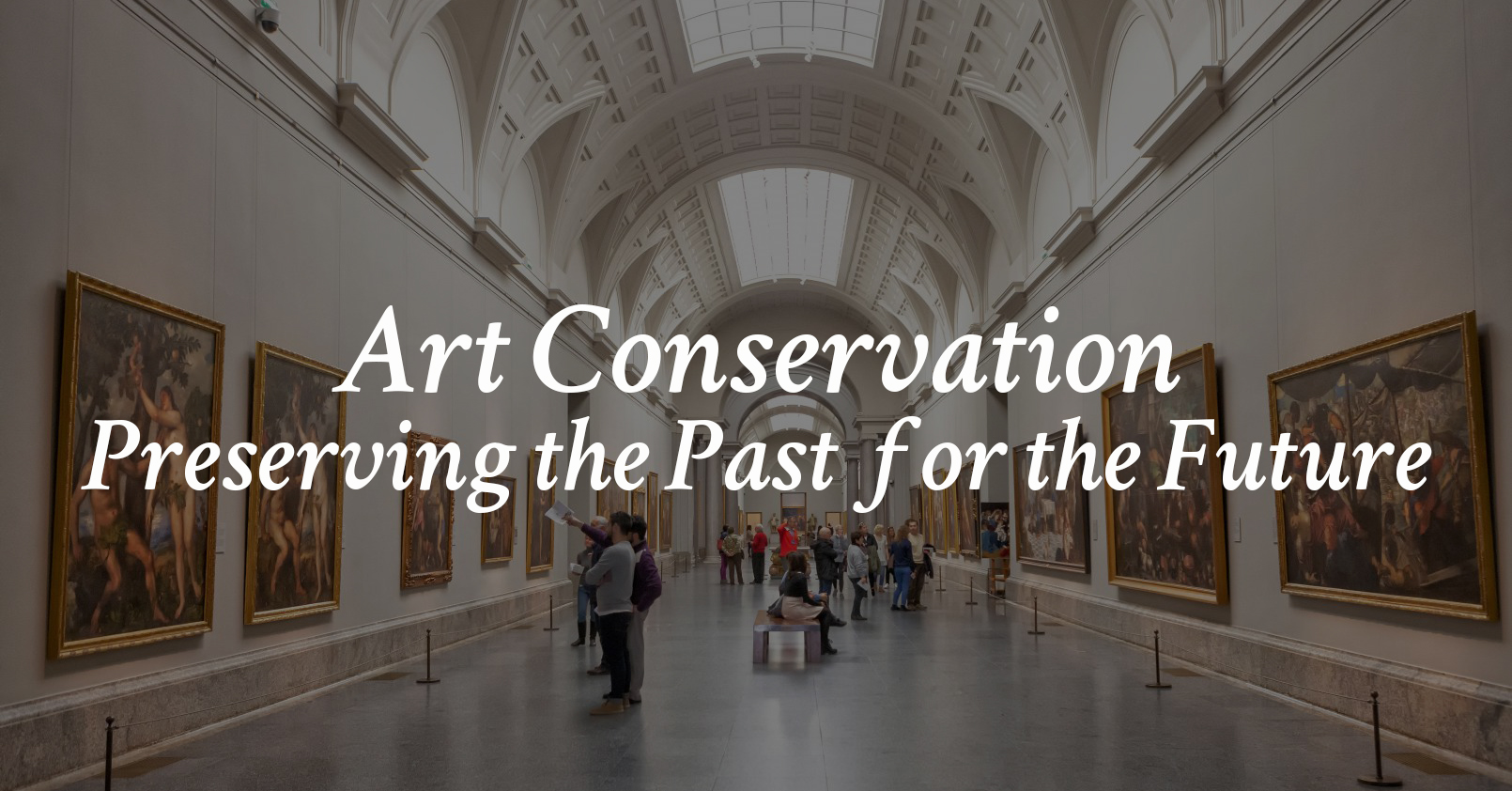
- Introduction to Art Conservation
- Principles of Art Conservation
- Common Challenges in Art Conservation
- Techniques and Methods in Art Conservation
- Conservation of Different Art Forms
- Emerging Trends in Art Conservation
- Case Studies in Art Conservation
- Training and Education in Art Conservation
- Future Outlook for Art Conservation
- Conclusion
- FAQs (Frequently Asked Questions)
Introduction to Art Conservation
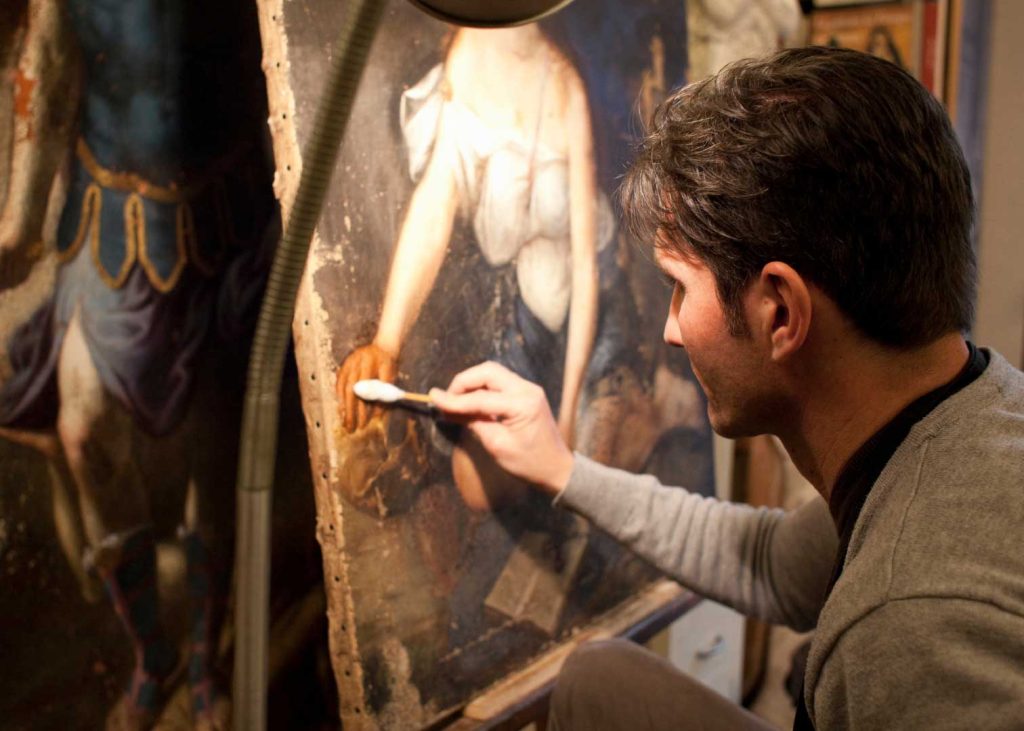

Art conservation is the practice of maintaining and restoring artworks to preserve their original aesthetic, historical, and cultural value. It involves a multidisciplinary approach that combines scientific analysis, historical research, and artistic expertise. Art conservation aims to protect and safeguard artworks from damage, decay, and loss, ensuring their longevity for future generations to appreciate and study.
Definition of Art Conservation
Art conservation refers to the maintenance, preservation, and restoration of artworks that have been adversely affected by neglect, intentional damage, or the natural deterioration caused by time and human use. It encompasses a range of techniques and methodologies designed to prevent further damage, stabilize the condition of artworks, and, when necessary, restore them to their original appearance and integrity.
Importance of Art Conservation
Art conservation is of paramount importance for several reasons. Firstly, it ensures the preservation of cultural heritage. Artworks provide valuable insights into the history, beliefs, and societal values of past civilizations and cultures. By conserving artworks, we can safeguard this knowledge and pass it on to future generations
Secondly, art conservation allows for the study and interpretation of artworks. Scholars, researchers, and art historians rely on well-preserved artworks to analyze artistic techniques, materials, and cultural contexts. Conservation facilitates in-depth examination and analysis, providing a deeper understanding of artistic processes and historical significance
Additionally, art conservation plays a crucial role in maintaining the aesthetic quality of artworks. By addressing issues such as discoloration, damage, or deterioration, conservators can restore an artwork’s visual appeal and original intention. This ensures that viewers can experience the artwork as the artist intended
Historical Background
The practice of art conservation has evolved over time, with the methods and techniques developing alongside advancements in science and technology. In earlier periods, conservation efforts were often limited by the available knowledge of art production techniques.
However, in the 20th century, art conservation and restoration became recognized as professional fields. Trained conservators began employing scientific methods and interdisciplinary approaches to address the specific needs of artworks. Conservation practices expanded beyond museums and galleries to involve civic authorities, artists, collectors, and the general public
Today, art conservation is a specialized discipline that combines expertise in art history, chemistry, materials science, and practical conservation techniques. It continues to evolve, adapting to new challenges and embracing innovative approaches to ensure the preservation and longevity of our artistic heritage.
Principles of Art Conservation
Art conservation is guided by a set of principles that form the foundation of the field. These principles encompass various stages of the conservation process, from documentation and assessment to preventive conservation, examination and analysis, and treatment and restoration.
Documentation and Assessment
Documentation and assessment are crucial steps in art conservation. They involve the systematic recording of information about an artwork, its condition, and its historical context. Through detailed documentation, conservators establish a baseline record that serves as a reference for future conservation efforts. This includes photographic documentation, written descriptions, and condition reports. Assessment involves a comprehensive examination of the artwork to identify existing damage, deterioration, and potential risks. It helps conservators develop appropriate strategies for its preservation and treatment [7].
Preventive Conservation
Preventive conservation focuses on minimizing risks and protecting artworks from potential damage or deterioration. It involves implementing strategies and measures to create a stable environment and ensure proper handling, storage, and display of artworks. Preventive conservation aims to mitigate factors such as light exposure, temperature and humidity fluctuations, pests, pollutants, and improper handling. By addressing these preventive measures, conservators can significantly extend the lifespan of artworks and reduce the need for more invasive treatments [7].
Examination and Analysis
Examination and analysis are essential components of art conservation. Through close examination, conservators carefully study the artwork’s materials, structure, and condition. They employ various techniques, including visual observation, magnification, ultraviolet light examination, and infrared reflectography, to gather information about the artwork. Analysis involves scientific investigations, such as pigment analysis, X-ray imaging, spectroscopy, and microscopy, to gain insights into the composition and deterioration mechanisms of the materials. This in-depth examination and analysis inform the decision-making process and help develop appropriate conservation strategies [7].
Treatment and Restoration
Treatment and restoration involve the physical intervention and care needed to address existing damage or deterioration and restore the artwork’s aesthetic and structural integrity. This stage requires expertise in various conservation techniques, including cleaning, stabilizing fragile elements, repairing structural damage, and retouching areas of loss. Conservation treatments are carefully planned and executed, considering ethical guidelines, reversibility, and minimal intervention to preserve the authenticity and artistic intent of the artwork [1].
Conservators adhere to these principles throughout the conservation process, ensuring the preservation, stability, and responsible treatment of artworks. By employing these principles, art conservation professionals strive to protect our cultural heritage for future generations to appreciate and study.
Common Challenges in Art Conservation
Art conservation faces several challenges due to environmental factors, material deterioration, loss and damage, and ethical considerations. Environmental factors like temperature, humidity, light, and pollutants can accelerate the degradation of artworks. Materials used in artworks, such as pigments, binders, and supports, can deteriorate over time, leading to discoloration, cracking, or loss. Accidental damage, vandalism, or neglect can cause structural and aesthetic issues that require careful restoration. Ethical considerations arise when deciding on the extent of intervention, balancing the preservation of the original artwork with the need for conservation treatment.
Techniques and Methods in Art Conservation
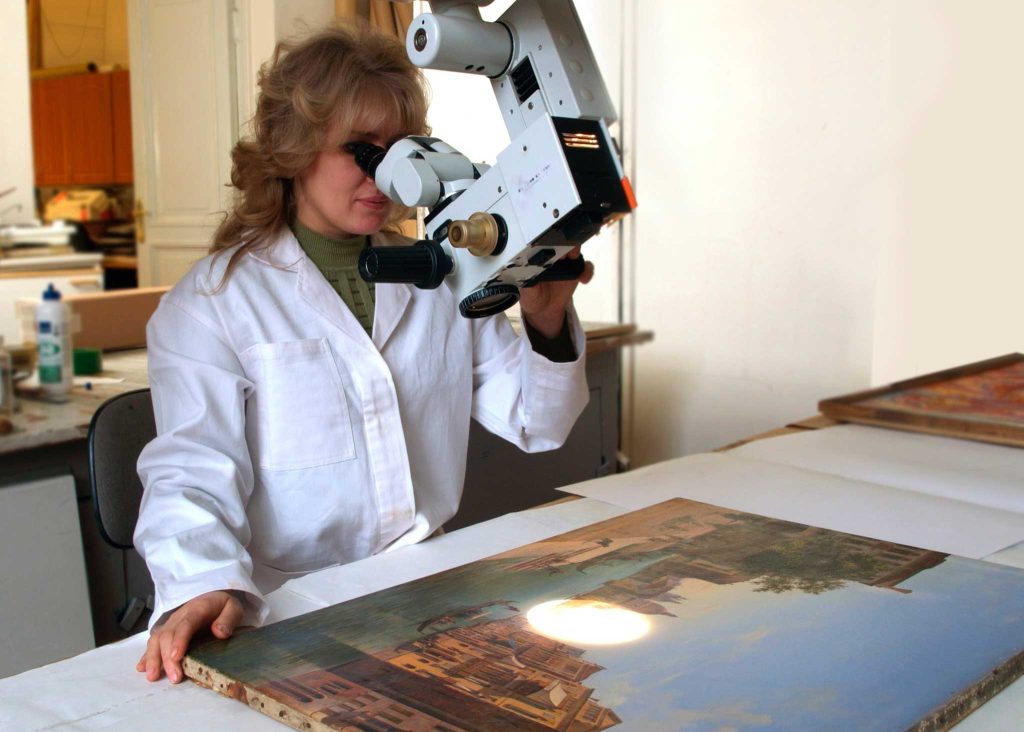

Art conservation encompasses a wide range of techniques and methods that are employed to preserve and restore artworks. These techniques aim to address specific conservation needs and challenges associated with cleaning, stabilization, consolidation, and retouching.
Cleaning and Surface Preparation
Cleaning is an essential step in art conservation, especially for paintings and sculptures that have accumulated dirt, grime, varnish layers, or discolored coatings over time. Conservators utilize various methods such as mechanical cleaning, solvent cleaning, or aqueous cleaning to remove surface contaminants carefully. The choice of cleaning method depends on the artwork’s materials, condition, and the nature of the soiling. Surface preparation also involves the removal of previous restoration materials or layers that may have deteriorated or discolored, preparing the artwork for further conservation interventions.
Structural Stabilization
Structural stabilization is a critical technique employed in the conservation of artworks with structural damage or instability. It involves addressing issues such as cracks, tears, warping, or detachment of elements. Conservators employ various methods to stabilize the artwork’s structure, including adhesive bonding, stitching, or infilling support structures. Structural stabilization ensures the artwork’s physical integrity and prevents further damage or deterioration, allowing it to be displayed or handled safely.
Consolidation and Reintegration
Consolidation is a technique used to stabilize fragile or flaking surfaces, such as paint layers or decorative elements on artworks. Conservators carefully apply consolidants to strengthen these delicate areas, ensuring their adhesion and preventing further loss or detachment. Reintegration involves the reattachment or reconstruction of missing or damaged elements in an artwork. This technique can include in-painting or filling losses with compatible materials to visually reintegrate the artwork while respecting its original appearance and intent.
Retouching and Inpainting
Retouching and inpainting are techniques used to reintegrate areas of loss or damage in an artwork’s surface. Conservators apply carefully matched pigments and materials to visually reintegrate these areas, aiming to harmonize them with the original surrounding areas. The goal of retouching and inpainting is to make the loss or damage less visually distracting, ensuring the artwork’s aesthetic unity without compromising its authenticity or artistic intent. These techniques require a deep understanding of the artwork’s style, technique, and historical context.
Through the application of these techniques and methods, art conservators skillfully address specific conservation challenges and ensure the longevity, stability, and visual integrity of artworks. The careful implementation of these techniques, along with adherence to ethical guidelines and documentation, allows art conservation to preserve our cultural heritage for future generations to appreciate and study.
Conservation of Different Art Forms
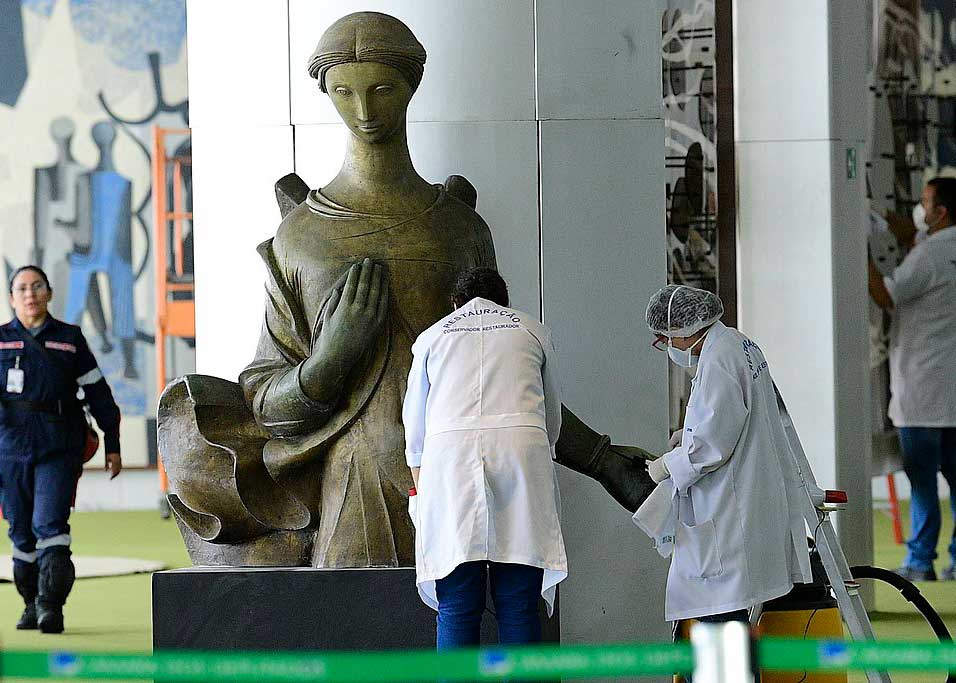

Art conservation encompasses the preservation and restoration of various art forms, each with its unique materials, techniques, and conservation challenges. Conservators employ specialized methods and techniques to ensure the long-term preservation and care of different art forms.
Paintings and Drawings
Paintings and drawings, created using various mediums such as oil, acrylic, watercolor, or charcoal, require specific conservation approaches. Conservators carefully examine the condition of the artwork, addressing issues such as flaking paint, surface dirt, discoloration, or tears. They employ techniques like surface cleaning, varnish removal, consolidation of flaking paint layers, and inpainting to restore the artwork’s visual integrity and stability. Additionally, they may also focus on stabilizing the support structure, such as canvas or paper, to prevent further damage or deterioration.
Sculptures and 3D Objects
Sculptures and three-dimensional objects made from materials like stone, metal, wood, or ceramics require specialized conservation techniques. Conservators assess the structural stability, surface deterioration, and potential environmental factors affecting these objects. They may employ methods such as cleaning, consolidation, structural reinforcement, or fillings to address issues like surface erosion, cracks, or losses. Preservation efforts also focus on stabilizing the object’s environment to prevent further degradation, such as controlling temperature, humidity, and light exposure.
Textiles and Fabrics
Textiles and fabrics, including tapestries, costumes, or historical garments, require delicate conservation techniques. Conservators assess the textile’s condition, addressing issues like fading, discoloration, tears, or deterioration caused by pests or improper storage. They utilize methods such as surface cleaning, stitching, or consolidation to stabilize fragile fibers and prevent further damage. Preservation efforts often involve proper mounting, framing, or storage techniques to safeguard the textiles from environmental factors that could contribute to their decay.
Photography and Digital Art
Conservation of photography and digital art presents unique challenges due to their reliance on technological processes and materials. Conservators work to preserve both the physical and digital components of these art forms. They address issues like fading or discoloration of prints, degradation of digital media, or obsolescence of playback equipment. Conservation efforts involve proper storage, digitization for long-term preservation, and the development of strategies to address evolving technologies. Collaboration with specialists in digital preservation and data management is crucial in ensuring the future accessibility and integrity of these artworks.
By applying specialized techniques and expertise, conservators strive to maintain the aesthetic, structural, and historical integrity of diverse art forms. Through their efforts, these valuable artworks can be enjoyed by present and future generations, offering insights into our cultural heritage and artistic expression.
Emerging Trends in Art Conservation
The field of art conservation is continually evolving, adapting to new challenges and embracing innovative practices. Technological advancements, such as imaging techniques and scientific analysis tools, aid in art examination and analysis. Sustainable conservation practices focus on reducing environmental impact and promoting ethical sourcing of materials. Collaborative approaches involve interdisciplinary collaborations and knowledge sharing among conservators, scientists, artists, and stakeholders. Community engagement initiatives raise public awareness about art conservation and foster a sense of ownership and responsibility for cultural heritage.
Case Studies in Art Conservation
Art maintenance involves the careful examination, analysis, and treatment of artworks to preserve their integrity and ensure their longevity. Here are several notable case studies that highlight the diverse challenges and approaches in the field of art conservation:
Restoration of a Renaissance Painting
One compelling case study in art conservation is the restoration of a Renaissance painting. Renaissance artworks often suffer from issues like discoloration, paint flaking, and accumulated dirt over time. Conservators meticulously examine the painting, employing techniques such as surface cleaning, consolidation of paint layers, and inpainting to restore the artwork to its original state. This process requires a deep understanding of the painting’s historical context, materials used, and the artist’s techniques. The restoration of a Renaissance painting allows for the revival of its aesthetic beauty and ensures its preservation for future generations to appreciate.
Conservation of a Contemporary Installation
Contemporary art installations often present unique conservation challenges due to their unconventional materials and complex assembly. These artworks can incorporate a wide range of materials, including mixed media, electronics, or ephemeral elements. Conservators must navigate the complexities of preserving these installations while respecting the artist’s vision and intent. They employ methods such as documentation, preventive measures, regular maintenance, and, when necessary, collaboration with artists to ensure the longevity and integrity of the artwork. The conservation of contemporary installations emphasizes the importance of adapting conservation practices to address the evolving nature of artistic expression.
Preservation of Cultural Heritage Sites
Art conservation extends beyond individual artworks to encompass the preservation of cultural heritage sites. These sites include historical buildings, archaeological ruins, or monumental structures. Conservation efforts focus on structural stabilization, environmental control, and preventive measures to safeguard these sites from deterioration caused by natural elements, pollution, or human activities. Techniques such as documentation, cleaning, consolidation, and selective restoration are employed to protect and maintain the integrity of these significant cultural landmarks. The preservation of cultural heritage sites ensures their continued relevance and contributes to our understanding of history and identity.
Conservation Challenges in Modern Materials
The advent of modern materials in contemporary art presents conservation challenges due to their inherent instability and degradation over time. Artworks incorporating plastics, synthetic materials, or digital media can face rapid deterioration or obsolescence. Conservators grapple with developing suitable preservation strategies for these materials, including preventive measures, testing, and research into their long-term behavior. Collaborations between conservators, artists, scientists, and industry experts are crucial to finding innovative solutions and ensuring the sustainable preservation of modern artworks for future generations.
These case studies illustrate the diverse and evolving nature of art conservation, showcasing the interdisciplinary efforts and expertise required to safeguard our artistic heritage. By studying and addressing these challenges, conservators contribute to the understanding, preservation, and appreciation of artworks from different periods and artistic movements.
Training and Education in Art Conservation
Art conservation requires specialized knowledge and skills. Academic programs and institutions worldwide offer conservation training, covering subjects like art history, chemistry, materials science, and practical conservation techniques. Professional organizations and networks provide resources, conferences, and workshops to facilitate knowledge exchange and collaboration among conservators. Continuing education and skill development are essential for staying updated with new research, technologies, and conservation practices. Art conservation offers diverse career opportunities, including positions in museums, galleries, research institutions, and private conservation practices.
Future Outlook for Art Conservation
The future of art conservation holds several challenges and opportunities. Preservation of digital art presents new challenges in terms of technological obsolescence, data migration, and preserving the artist’s intent. Conservation ethics and cultural context continue to shape conservation practices, emphasizing the importance of respecting cultural values and traditions. Integrating science and art maintenance enables a deeper understanding of materials and degradation mechanisms, leading to more effective conservation strategies. Public awareness and advocacy play a crucial role in garnering support and resources for art conservation, ensuring the preservation of our artistic heritage for generations to come.
Conclusion
Art conservation plays a vital role in safeguarding our artistic heritage, ensuring that artworks can be appreciated and studied by present and future generations. By employing scientific techniques, historical research, and artistic expertise, conservators work diligently to preserve the integrity and beauty of artworks. The challenges they face, from environmental factors to ethical decisions, require careful consideration and expertise. Through continued research, collaboration, and public engagement, the field of art care can evolve and adapt to new challenges, securing a vibrant future for our cultural heritage.
FAQs (Frequently Asked Questions)
1. What are some famous art conservation projects?
Some famous art conservation projects include the restoration of Michelangelo’s Sistine Chapel ceiling, Leonardo da Vinci’s “The Last Supper,” and the conservation of ancient Egyptian artifacts in the British Museum.
2. How long does art conservation take?
The duration of art conservation projects varies depending on the artwork’s size, complexity, and condition. It can range from a few weeks to several years.
3. What are the ethical considerations in art conservation?
Ethical considerations in art conservation involve decisions about the extent of intervention, reversibility of treatments, and balancing preservation with the artist’s intent and historical authenticity.
4. Can art conservation reverse all damage?
While art conservation can significantly improve the condition of an artwork, it cannot reverse all damage. Some losses or alterations may be irreversible, requiring careful documentation and minimal intervention.
5. How can individuals contribute to art conservation?
Individuals can contribute to art conservation by supporting museums, galleries, and cultural institutions, following proper handling and care guidelines for artworks, and spreading awareness about the importance of preserving our artistic heritage.

